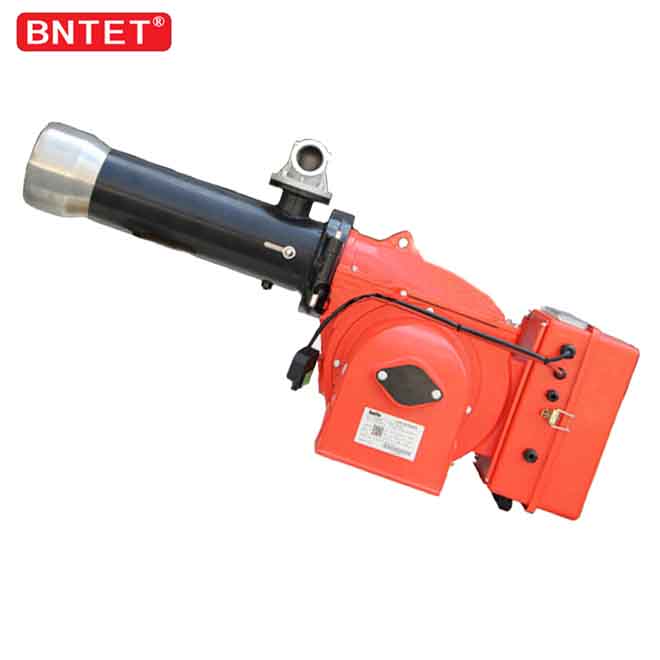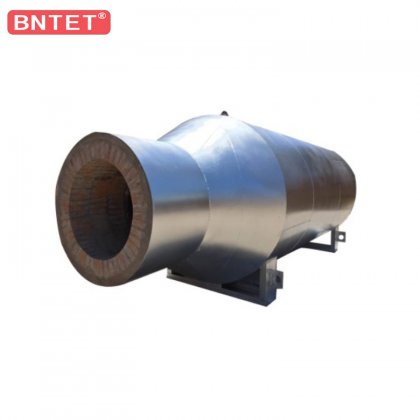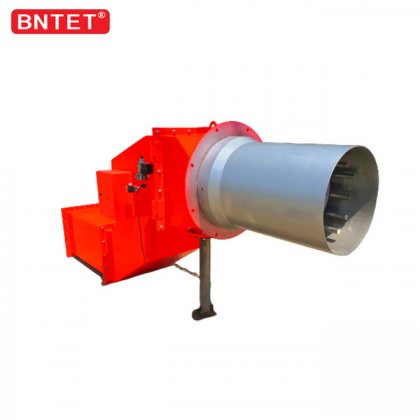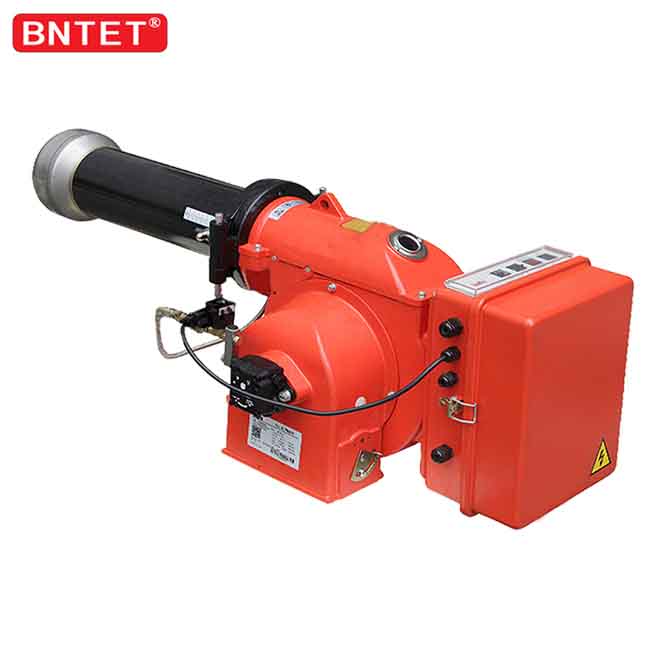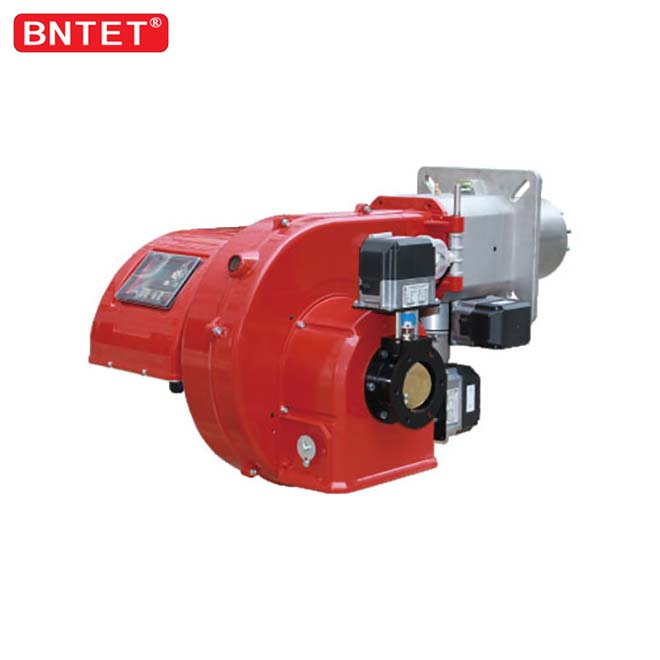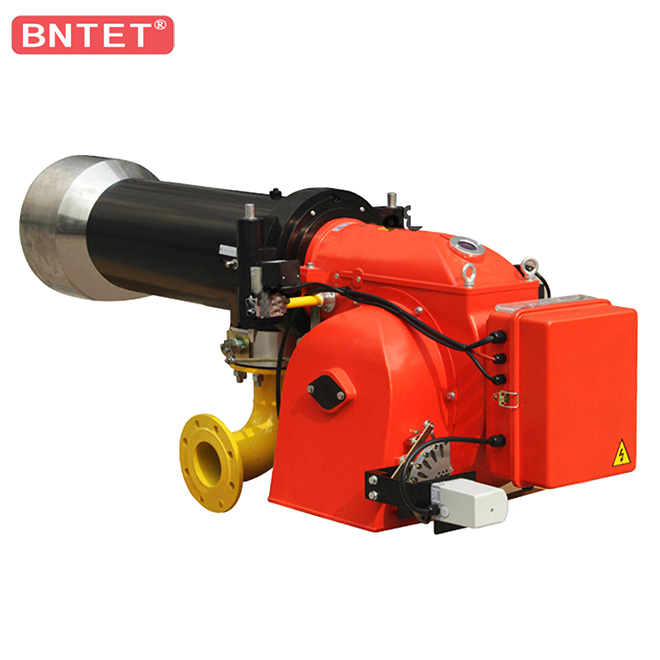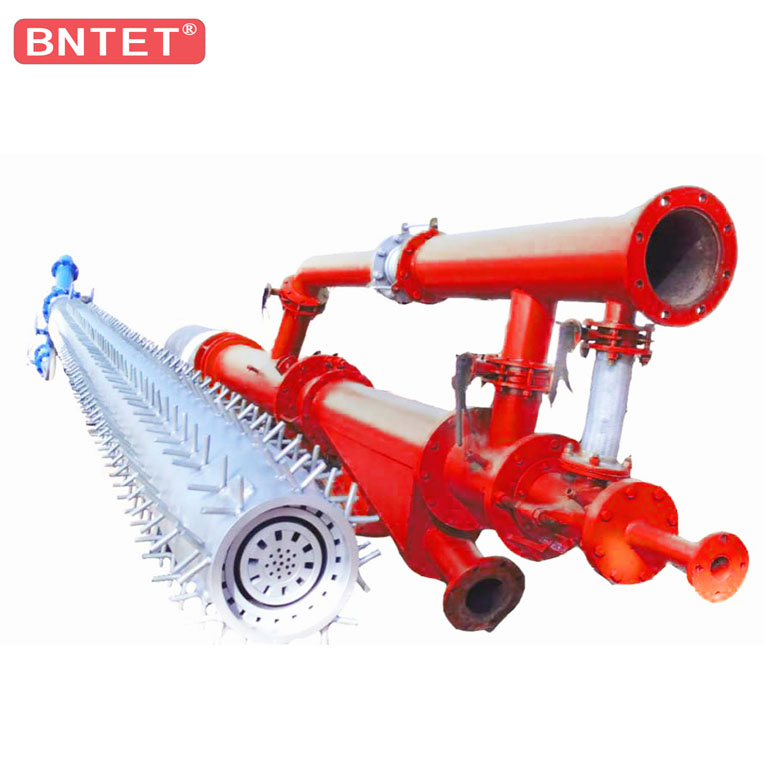1. Fuel system
1. The function of the fuel system is to ensure the fuel required for burner combustion. The system mainly includes: oil pipes and joints, oil pumps, solenoid valves, nozzles, and heavy oil preheaters.
Oil pipes and joints: used to transport fuel.
Oil pump:A mechanism that makes oil form a certain pressure. The output oil pressure is generally 10bar (1bar=1Kg/cm2).
On this basis, it can meet the needs of atomization and fuel injection, and is divided into single-pipe output and double-pipe output. Some burner oil pumps are coaxially connected to the blower motor, and some are driven by independent oil pump motors.
Solenoid valve:used to control the on and off of the oil circuit, usually two-way valves and three-way valves.
Nozzle: Its main function is to atomize oil droplets. Injection angle (30°, 45°, 60°, 80°), injection mode (solid, hollow, semi-hollow) and fuel injection volume are the main parameters of the nozzle. Nozzles with the same pressure and small fuel injection volume have better atomization effect.
Heavy oil preheater: used to heat heavy oil to a certain temperature to reduce the viscosity and increase the atomization effect of heavy oil. Its temperature control device is interlocked with the burner control circuit.

2. Air supply system
The function of the air supply system is to input air with a certain wind speed and volume into the combustion chamber. The main components include: casing, fan motor, fan impeller, air gun fire tube, damper controller, damper baffle, diffusion plate, etc.
Housing: It is the mounting bracket for each component of the burner and the main component of the fresh air inlet. According to the appearance, it can be divided into two types: box type and gun type. Box type burners are mostly covered with injection molding materials, and the power is generally relatively small. Most high-power burners are split type, usually gun type. The material of the shell is generally high-strength lightweight alloy casting.
Fan motor: It mainly provides power for the operation of fan impeller and high-pressure oil pump. Some burners also use independent motors to provide power. Some small burners will use a single-phase motor, and the burner can only turn in a specific direction to make it work properly.
Fan impeller: It can generate high enough wind pressure to overcome the resistance of the furnace and chimney, and blow enough air into the combustion chamber to meet the needs of combustion. This equipment is a cylindrical wheel equipped with blades with a certain inclination angle. Its composition material is generally high-strength light alloy steel, and there are also injection molded products. Qualified fan impellers have good balance performance.
Air gun fire tube: It plays the role of diversion and stabilizing wind pressure. It is also an integral part of the air inlet channel. Generally, there is a shell flange connected to the furnace mouth. The material of construction is usually high-strength, heat-resistant alloy steel.
Damper controller: It is a device that controls the rotation of the damper damper through a mechanical linkage. Generally, there are two types: hydraulic drive controller and servo motor control. The former runs smoothly and is not prone to failure, while the latter has precise control and stable air volume.
Damper baffle: Its main function is to adjust the air inlet volume of the air duct to control the air inlet volume. Its composition materials include injection molding and alloy. Injection molding baffles are generally single-piece, double-piece, three-piece and other combinations.
Diffusion plate (air regulator): The special structure can generate rotating airflow to help air and fuel fully mix, while also regulating the secondary air.
3. Ignition system
The function of the ignition system is to ignite the mixture of air and fuel. Its main components are: ignition transformer, ignition electrode, and electric fire high-voltage cable.
Ignition transformer: It is a conversion component that produces high-voltage output, usually 2X5KV, 2X6, 2X7, and the output current is generally between 15~30MA.
Ignition electrode: converts high-voltage electric energy into light and heat in the form of arc discharge to ignite fuel. Generally, there are single type and split type.
Electric fire high-voltage cable: Its function is to transmit electrical energy.
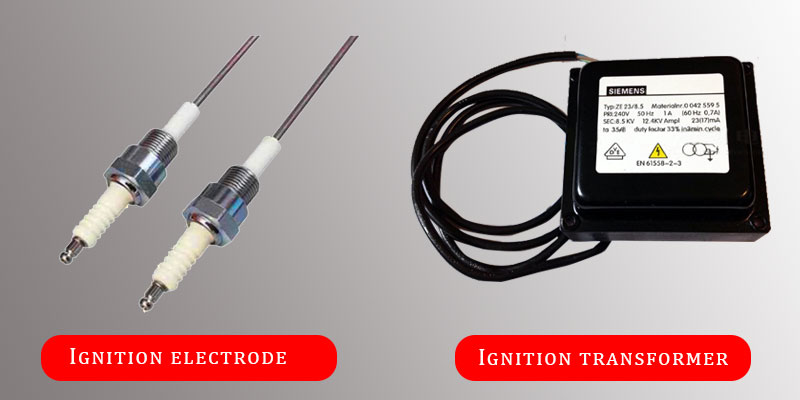
4. monitoring system
The function of the monitoring system is to ensure the safe operation of the burner. Its main components are flame monitors, pressure monitors, monitoring thermometers, etc.
Flame detector: Its main function is to monitor the formation of flame and generate a signal alarm. There are three main types of flame detectors: photoresistor, ultraviolet UV electric eye, and ionization electrode.
(1) Photoresistor: A type mostly used on light oil and heavy oil burners. Its function and working principle are: three contacts at a time are connected to the flame relay. The resistance of the photoresistor changes with the amount of light received by the device. , the more light it receives, the smaller the resistance. When the voltage at both ends is added to a certain value, the greater the current in the line. When the current reaches a certain value, the flame relay will start, allowing the burner to continue working downwards. . If the photoresistor does not sense enough light, the flame relay will not function and the burner will stop working. Since the flame is not bright enough when gas burns, photoresistor is not suitable for use on gas burners.
(2) Ionization electrode: mostly used in gas burners. The program controls the input of 220V voltage to the ignition transformer. One of the two output high-voltage lines is connected to the ground, and the other is connected to the ignition electrode. The discharge between the electrode and the ground produces sparks. The mixture of gas and air is ignited, and the program controller supplies power to the ionization electrode. If there is no flame, the power on the electrode will stop. If there is a flame, the gas will be ionized by its own high temperature, and the ion flow will flow between the electrode, flame and combustion head. The ion current is rectified into DC and reaches the flame relay through the grounded burner shell to make it work, ensuring the smooth progress of the subsequent work of the burner. If the ionization electrode is grounded, the current generated is AC instead of DC, the flame relay does not work, and the program controller is locked. In addition, in the same ground circuit, both the ionization current and the ignition current pass through. Since the ignition current is much larger than the ionization current, when the two directions are opposite, the ionization current will be blocked by the ignition current. However, after the flame is generated, the burner is disconnected. This defect can be compensated by the reverse input of the ignition transformer. Because reverse wiring causes ignition, its AC direction rotates 180°, and the generated ignition current also rotates 180°. The two current directions are consistent, thereby overcoming the above defects. In addition, the flame in the ionization zone is unstable. It can also cause the flame to be disconnected when the burner is disconnected. It may be due to an inappropriate air-gas ratio, which can be solved by adjusting the air volume or gas volume. It may also be caused by uneven distribution of air and gas in the combustion head, which can be solved by adjusting the combustion head. position to solve for uniformity.
(3) Ultraviolet UV electric eye: Usually used on oil and natural gas burners. This electric eye can only sense ultraviolet light in the flame (spectral range 190~270 nanometers), and the UV tube will not detect the flashing light in the furnace. The UV tube reacts to sunlight, ordinary light or furnace light substances. When the ambient temperature does not exceed 50°C, the lifespan of the UV tube is about 10,000 hours. Excessive ambient temperature has a great impact on battery life. If the UV light receives a sufficient amount of UV light, an electric current is generated and the machine or flame relay switches it off. If the UV lamp runs out of power, it will show the presence of UV light even if there is no ultraviolet light. In order to overcome this shortcoming, the program control will add appropriate voltage to both ends of it before each turn on, so even if the power is exhausted , its signal also only indicates that there is no flame, so the program controller stops working immediately.
Pressure monitor: Usually used for gas burners, mainly used for monitoring high and low pressure of gas, as well as wind pressure monitoring. If the burner is used for steam boilers, steam pressure monitoring can also be performed.
Temperature measurement device: mainly includes smoke temperature monitoring, oil (heavy oil) temperature monitoring, system water and medium water temperature monitoring and control, etc.
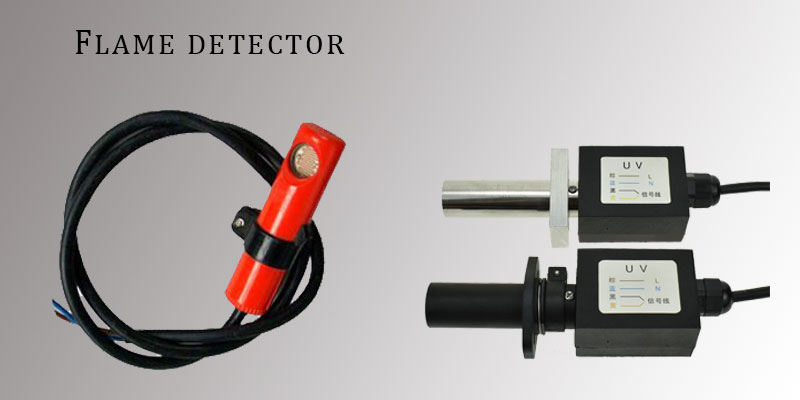
5. Electronic control system
The electronic control system is the command center and contact center of each of the above systems. The main control component is the program controller. Different burners are equipped with different program controllers. The main difference between them is that the time of each program step is different.
